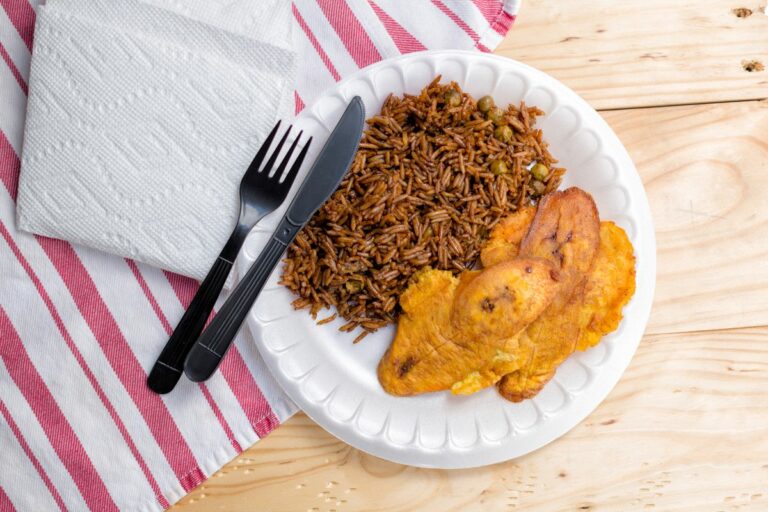Introduction: Haitian Cuisine and its Unique Flavors
Haitian cuisine is a rich fusion of indigenous, African, European, and Caribbean culinary influences. This unique mix of flavors, aromas, and textures is a testament to the country’s complex history and vibrant cultural heritage. Haitian cuisine is known for its bold flavors, spicy dishes, and comforting stews. It is a true reflection of the country’s agrarian lifestyle, using locally sourced ingredients such as rice, beans, plantains, yams, cornmeal, spices, and seafood.
Influences on Haitian Cuisine: A Historical Perspective
Haitian cuisine has been shaped by a variety of historical and cultural factors. The Taino people, who were the original inhabitants of Haiti, contributed to the cuisine with their use of cassava and yucca. The arrival of African slaves also had a significant impact on Haitian cuisine, as they brought with them their culinary traditions, such as cooking with okra and frying plantains. French colonization in Haiti further influenced the cuisine, with dishes like bouillon and boulettes originating from French recipes. The Haitian Revolution also played a role in the development of the cuisine, as it forced people to rely on locally sourced ingredients and create new dishes out of necessity.
Ingredients and Cooking Techniques in Haitian Cuisine
Haitian cuisine is characterized by its use of fresh, locally sourced ingredients and a variety of cooking techniques. Some of the essential ingredients used in Haitian cuisine include rice, beans, cornmeal, plantains, yams, seafood, and a variety of spices such as thyme, garlic, and pepper. Haitian dishes are often slow-cooked with a variety of flavorful ingredients like tomatoes, onions, and bell peppers. The cuisine also features a lot of grilled meats and seafood, often marinated in a tangy sauce made with citrus or vinegar.
A Comparison of Haitian Cuisine with Other Caribbean Cuisines
Compared to other Caribbean cuisines, Haitian cuisine stands out for its unique blend of African, European, and indigenous influences. Jamaican cuisine, for example, is known for its use of jerk seasoning and spicy curries, while Trinidadian cuisine is known for its use of Indian spices and roti. Haitian cuisine, on the other hand, is characterized by its use of local ingredients and its strong French and African influences.
Popular Haitian Dishes and their Culinary Roots
Some of the most popular Haitian dishes include griot (fried pork), tasso (smoked beef), and diri ak djon djon (rice with black mushrooms). These dishes are rooted in Haitian history and culture and are often associated with celebrations and special occasions. Griot, for example, is believed to have originated from African slaves who would cook pork in a spicy marinade and then fry it to preserve it for later use.
Conclusion: Haitian Cuisine’s Enduring Legacy in the Caribbean
Haitian cuisine is a testament to the country’s rich cultural heritage and complex history. It is a unique blend of indigenous, African, European, and Caribbean culinary influences that has evolved over time to create a rich and diverse cuisine. Haitian cuisine’s popularity is on the rise, and its influence can be seen in other Caribbean cuisines as well. With its bold flavors, comforting stews, and fresh ingredients, Haitian cuisine is sure to leave a lasting impression on anyone who tries it.

